Alopecia universalis: what is it?

Sommaire
Alopecia universalis is one of the most severe forms of hair loss, affecting not only the scalp but also the entire body. Although quite rare, it can have a significant impact on the quality of life of those affected. Read on to discover everything you need to know about alopecia universalis, its causes, symptoms and the treatment options available.
What is alopecia universalis?
Alopecia universalis is an autoimmune disease characterised by total hair loss over the entire body (Deshpande & Deshpande, 2023). Unlike other forms of alopecia, such as alopecia areata (which causes localised bald patches) or alopecia totalis (which results in complete hair loss on the scalp), alopecia universalis also affects the eyebrows, eyelashes, and body hair.
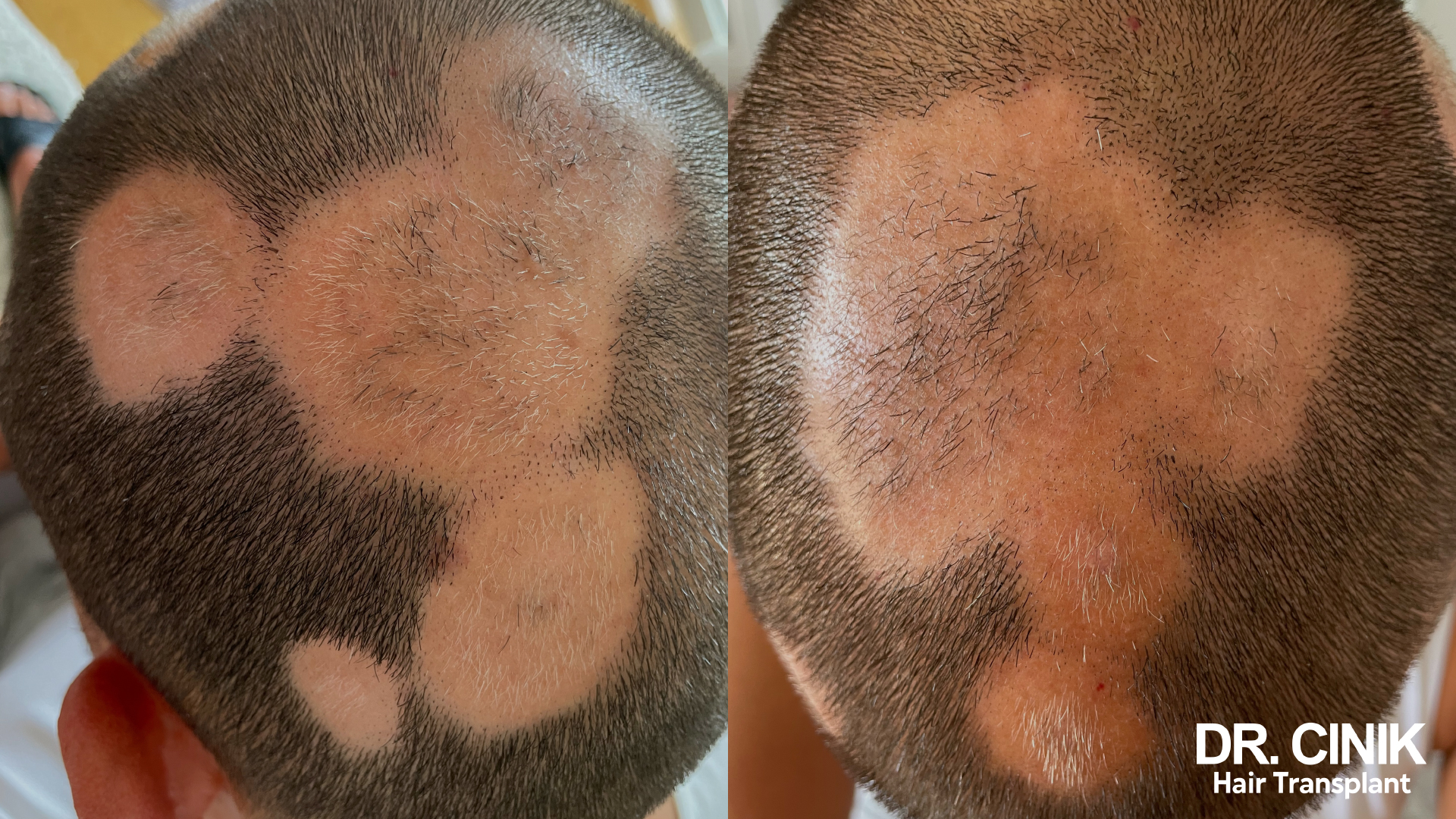
This condition often develops rather suddenly and can affect people of any age and any gender. It’s considered an extreme form of alopecia areata and results from an attack by the immune system on the hair follicles, preventing them from producing new hair. Recent studies have demonstrated the involvement of CD4+ and CD8+ T lymphocytes that infiltrate the hair follicles and become reactive to autoantigens of the hair bulb (Deshpande & Deshpande, 2023).
Although it isn’t painful or dangerous to physical health, alopecia universalis can have a significant psychological impact on those who suffer from it.
What are the symptoms of alopecia universalis?
Alopecia universalis manifests through a set of distinctive clinical signs. The main and most visible symptom is complete hair loss, which gradually extends to the entire body. The affected areas have a particularly smooth and shiny surface, devoid of any visible inflammation. Affected individuals may notice the successive loss of scalp hair, followed by loss of eyebrows and eyelashes, and then all body hair.
In addition to hair loss, patients may also notice changes in their nails. These changes often appear as ridges, small depressions called pits, or increased brittleness of the nails. In some cases, although more rarely, affected individuals may experience itching or tingling sensations in the areas affected by hair loss.
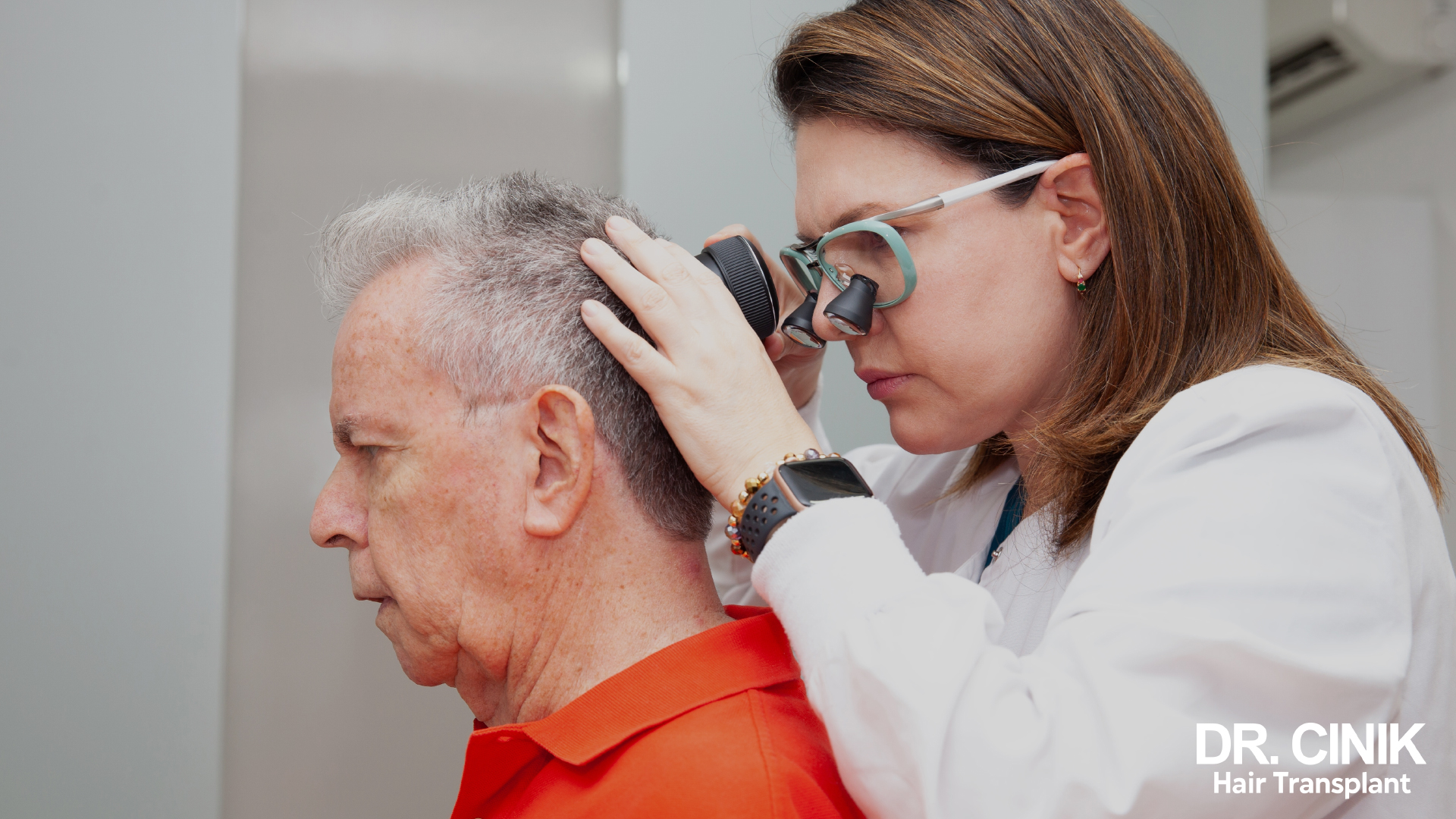
Good to know: In severe cases, patients may have a SALT (Severity of Alopecia Tool) score of 100, indicating complete hair loss, and an AA-IGA (Alopecia Areata Investigator Global Assessment) score of 4, reflecting the maximum severity of the condition (Yu et al., 2022).
What causes alopecia universalis?
The origin of alopecia universalis involves a complex interaction between several factors. Although the precise cause remains not entirely understood, scientific research has identified three main contributing mechanisms.
The genetic component plays a major role in the development of this condition. Studies show that a hereditary predisposition can significantly increase the risk of developing alopecia universalis. People with a family history of autoimmune diseases or other forms of alopecia are at increased risk.
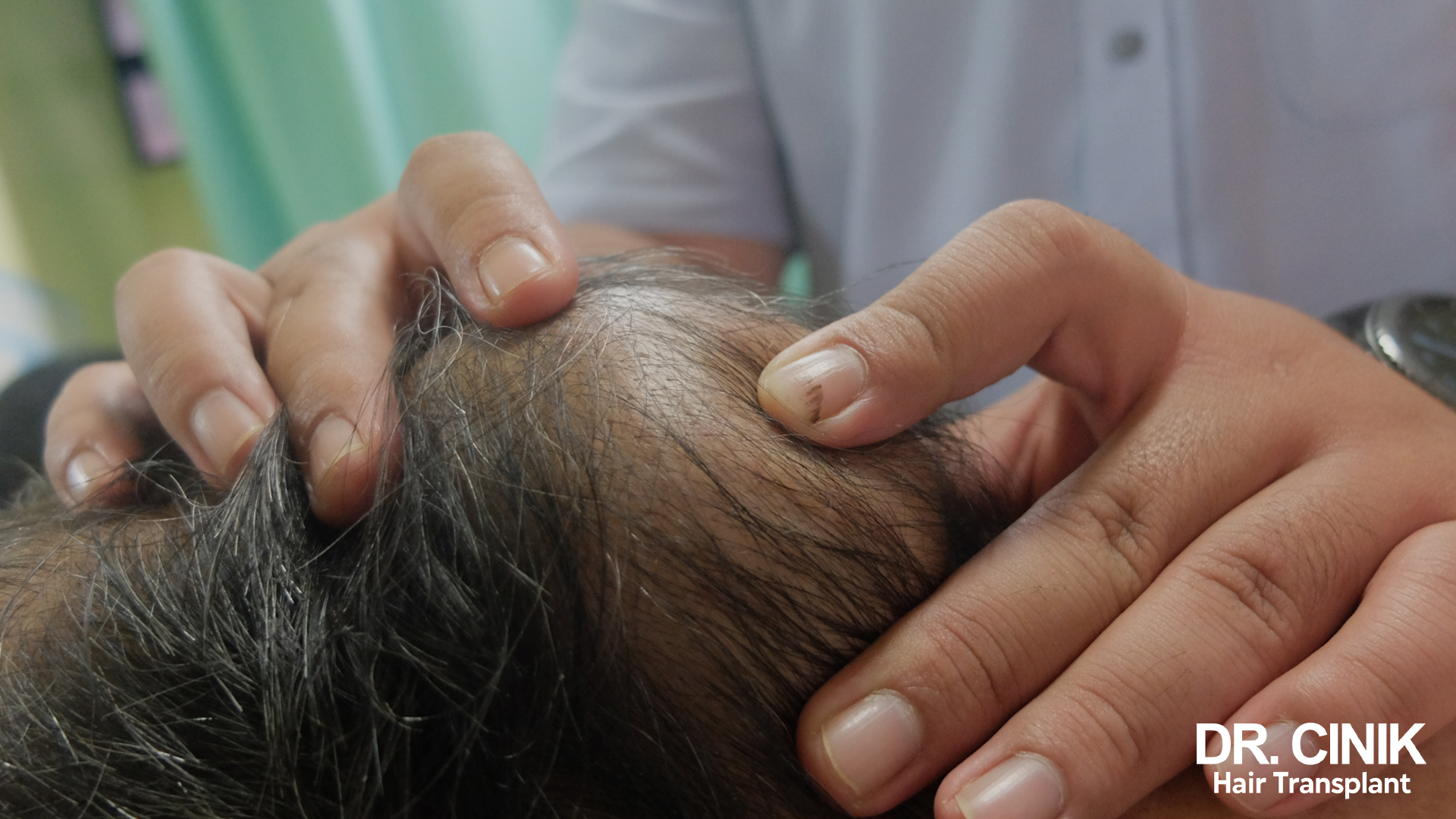
The autoimmune response is the central mechanism of this pathology. Under normal conditions, the immune system protects the body against pathogens. However, in the case of alopecia universalis, this defence system develops an inappropriate response, targeting and destroying hair follicles as if they were foreign to the body. Pathological examinations of patients with active alopecia reveal perifollicular inflammation and peribulbar lymphocytic infiltration around hair follicles in the anagen phase (Deshpande & Deshpande, 2023).
Environmental factors can also influence the development and progression of the disease. Stress, whether physical or emotional, certain infections, or exposure to toxic substances can trigger or aggravate the autoimmune response. These external elements act as catalysts, sometimes precipitating the onset of symptoms in predisposed individuals.
How to diagnose alopecia universalis?
Dermatologists use several tools and techniques to establish an accurate diagnosis and exclude other similar conditions. The evaluation begins with a detailed clinical examination, including a review of the patient’s medical history and family history. The physician then performs a thorough physical examination of the areas affected by hair loss.
- Scalp biopsy: This procedure involves taking a small sample of tissue from the scalp and examining it under a microscope. This analysis allows doctors to observe the cellular changes characteristic of alopecia universalis and to rule out other potential pathologies.
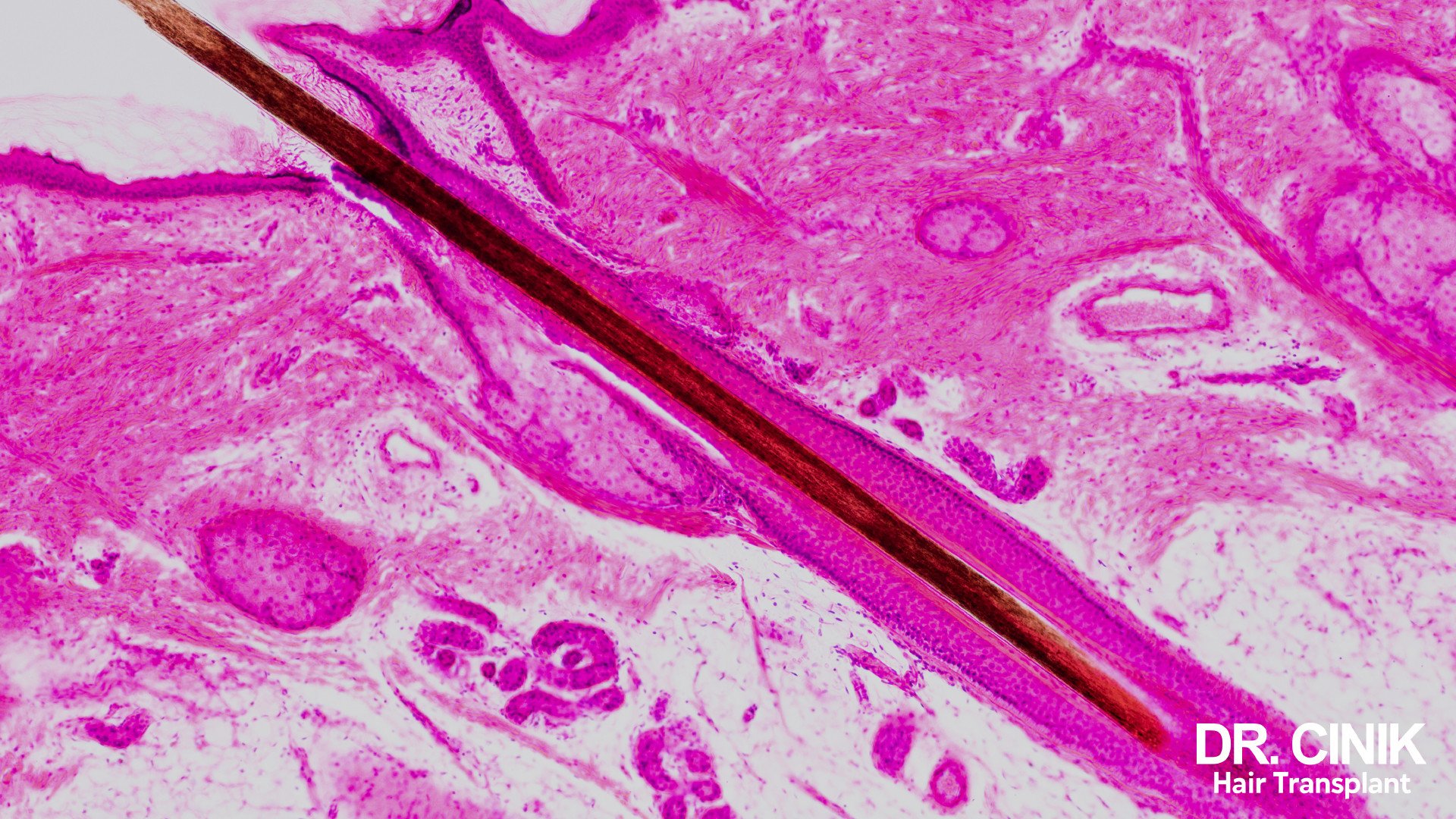
- Blood tests: These may be ordered to assess the presence of other associated autoimmune disorders or underlying infections that may be contributing to the condition. These tests also check hormone levels and other relevant biological markers.
- Trichoscopy: This non-invasive technique allows specialists to examine in detail the structure of the hair follicles and the condition of the scalp. This method helps to identify the characteristic signs of alopecia universalis and to monitor the progression of the disease.
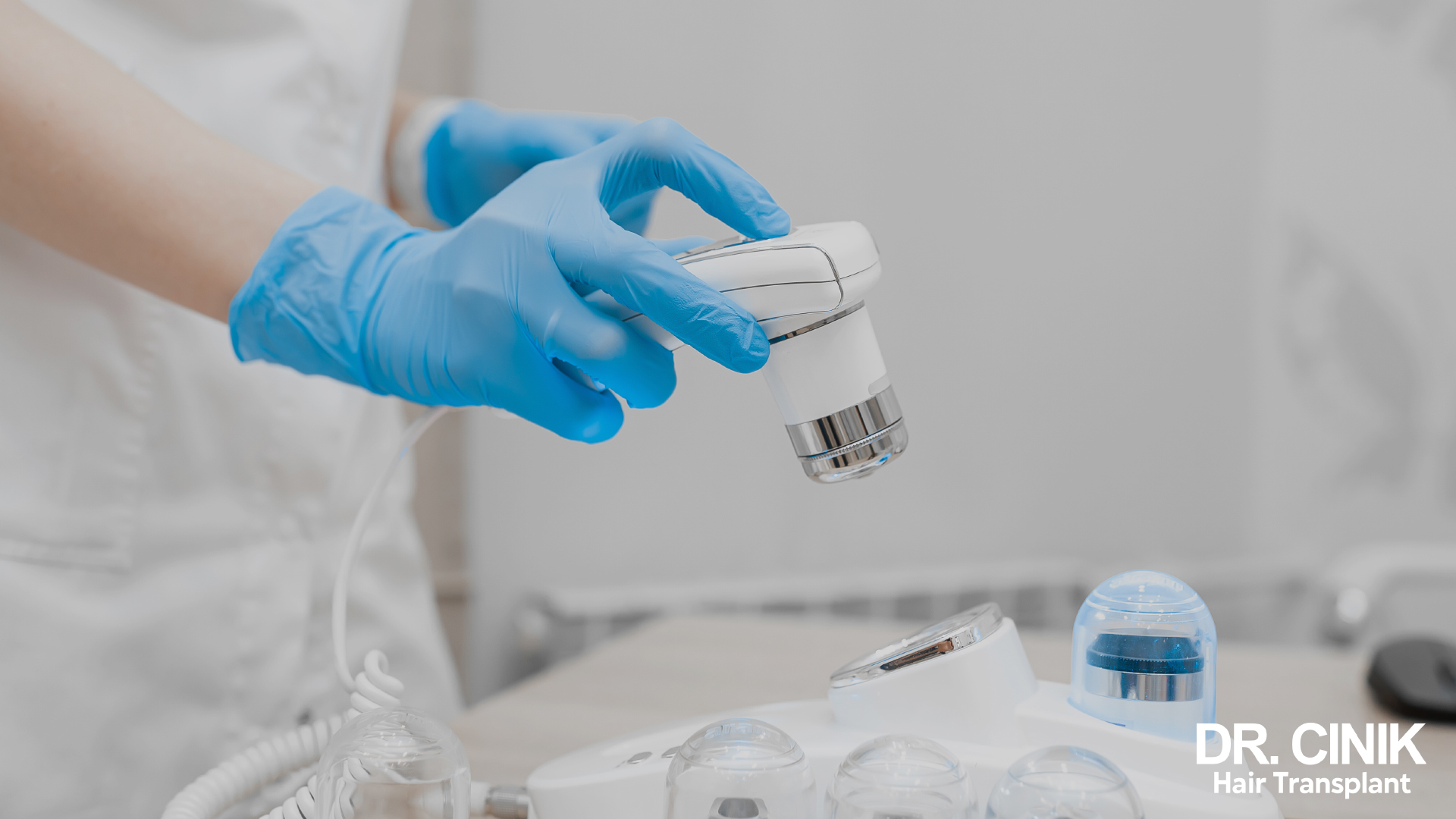
Good to know: Standardised assessment tools such as the Severity of Alopecia Tool (SALT) and the Alopecia Areata Investigator Global Assessment (AA-IGA) can be used to quantify the severity of the condition and track its progression over time (Yu et al., 2022).
What is the treatment for alopecia universalis?
Whilst there is currently no definitive cure for alopecia universalis, several treatment options can help manage the condition and, in some cases, stimulate hair regrowth.
Topical treatments are often the first line of treatment. Topically applied corticosteroids can help reduce inflammation and stimulate hair growth. Immunotherapy agents such as Diphencyprone can be used to modify the local immune response. Minoxidil, well known for its hair growth-stimulating properties, may also be prescribed by NHS specialists or private dermatologists.
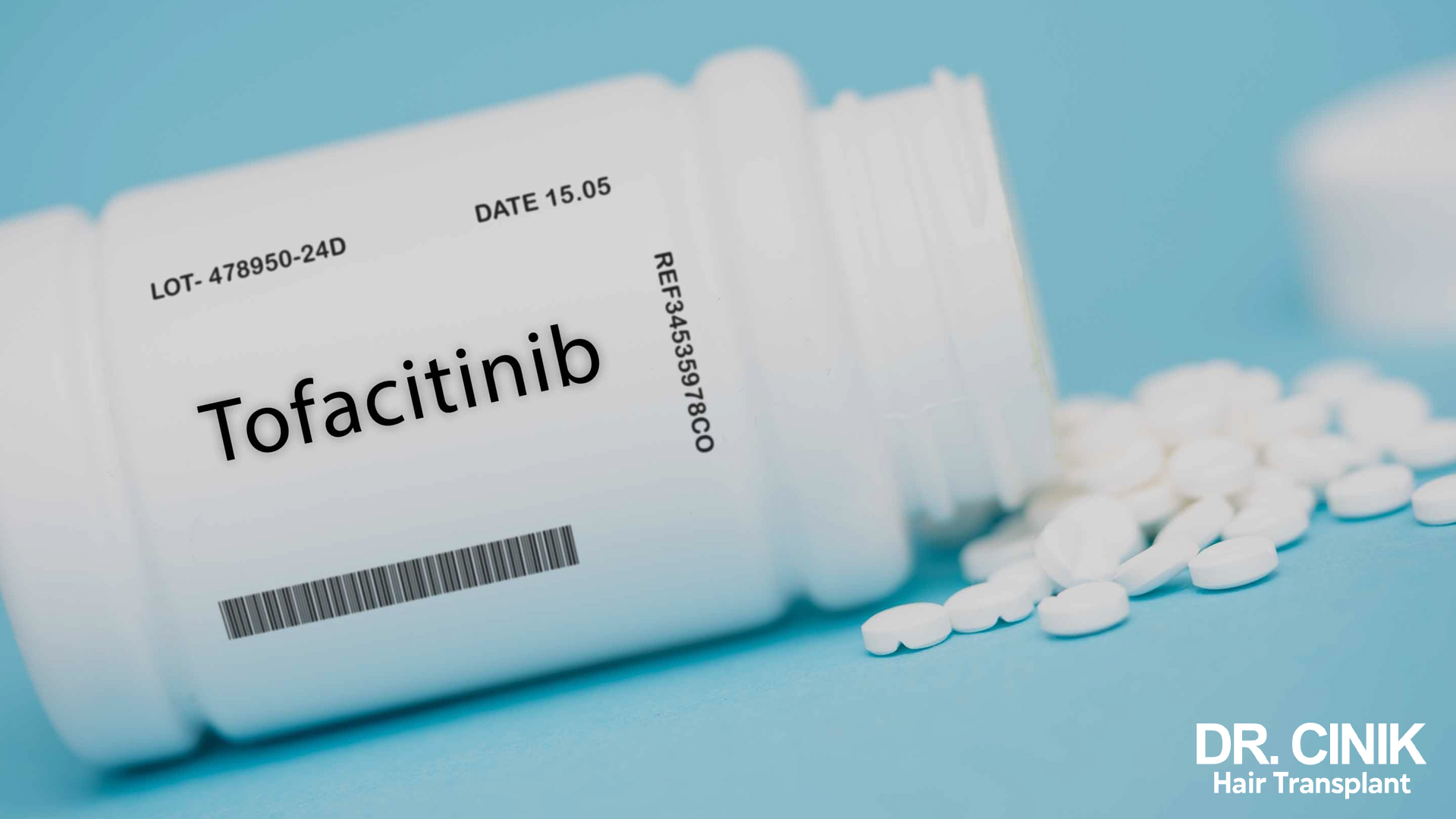
Recent advances in the field of Janus kinase (JAK) inhibitors have shown promising results. Tofacitinib, a JAK inhibitor, has demonstrated significant efficacy in the treatment of alopecia universalis, allowing hair regrowth in some patients after 24 weeks of treatment (Yu et al., 2022). Similarly, deucravacitinib, a selective TYK2 inhibitor, has been reported to be effective in a case of alopecia universalis resistant to conventional treatments, with notable hair regrowth after only 6 weeks of treatment (Oliel et al., 2023).
For many patients, cosmetic solutions play a crucial role in the daily management of the condition. Good quality wigs, which may be available through the NHS in some cases, can provide a natural appearance and restore self-confidence. Permanent makeup techniques such as eyebrow microblading can also help improve the aesthetic appearance and psychological well-being of patients.
What are the other types of alopecia?
Alopecia universalis is just one of many forms of hair loss. Each type of alopecia has distinct characteristics, causes, and progressions that are important to understand for proper diagnosis and treatment.
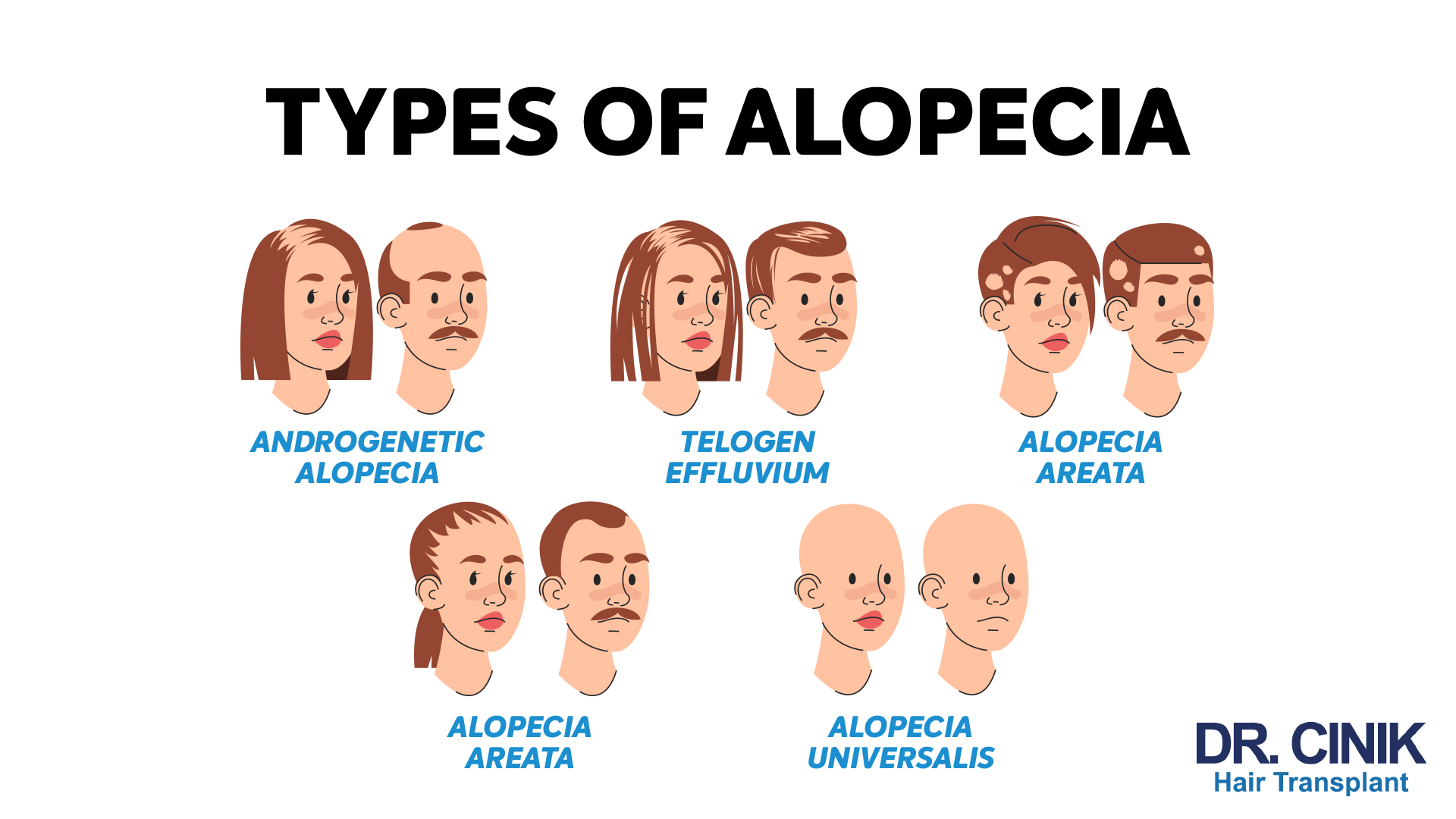
Androgenetic alopecia
Androgenetic alopecia is the most common form of hair loss. It primarily affects men, but can also affect women. In men, it typically presents with progressive receding of the hairline and loss at the vertex. In women, it is characterised by diffuse thinning at the crown of the head and preservation of the hairline.
Telogen Effluvium
Telogen Effluvium is characterised by sudden and temporary hair loss, often triggered by intense physical or emotional stress. This form of alopecia can occur a few months after a traumatic event, surgery, serious illness, or major hormonal change such as pregnancy. Hair falls out in a diffuse manner over the entire scalp.
Scarring Alopecia
Scarring Alopecia represents a group of disorders where hair loss is accompanied by permanent destruction of hair follicles, which are replaced by scar tissue. This form can be primary, resulting from inflammation directly targeting the hair follicle, or secondary, caused by trauma, burns, or certain skin diseases.
Alopecia areata
Alopecia areata, or patchy alopecia, is characterised by the appearance of well-demarcated bald patches, usually round or oval. This autoimmune condition can affect any area of the body, but most commonly occurs on the scalp. Alopecia areata can evolve unpredictably, with periods of hair loss followed by spontaneous regrowth. In some cases, it can progress to alopecia totalis (complete loss of scalp hair) or universalis, as observed in a clinical case where a 28-year-old patient saw his alopecia areata progress to alopecia universalis despite various attempts at treatment (Deshpande & Deshpande, 2023).
What are the solutions for alopecia?
Therapeutic options vary depending on the type of alopecia. Drug treatments include minoxidil applied topically, which stimulates hair growth and slows hair loss. finasteride, administered orally, acts by reducing the production of dihydrotestosterone, a hormone involved in some forms of alopecia.
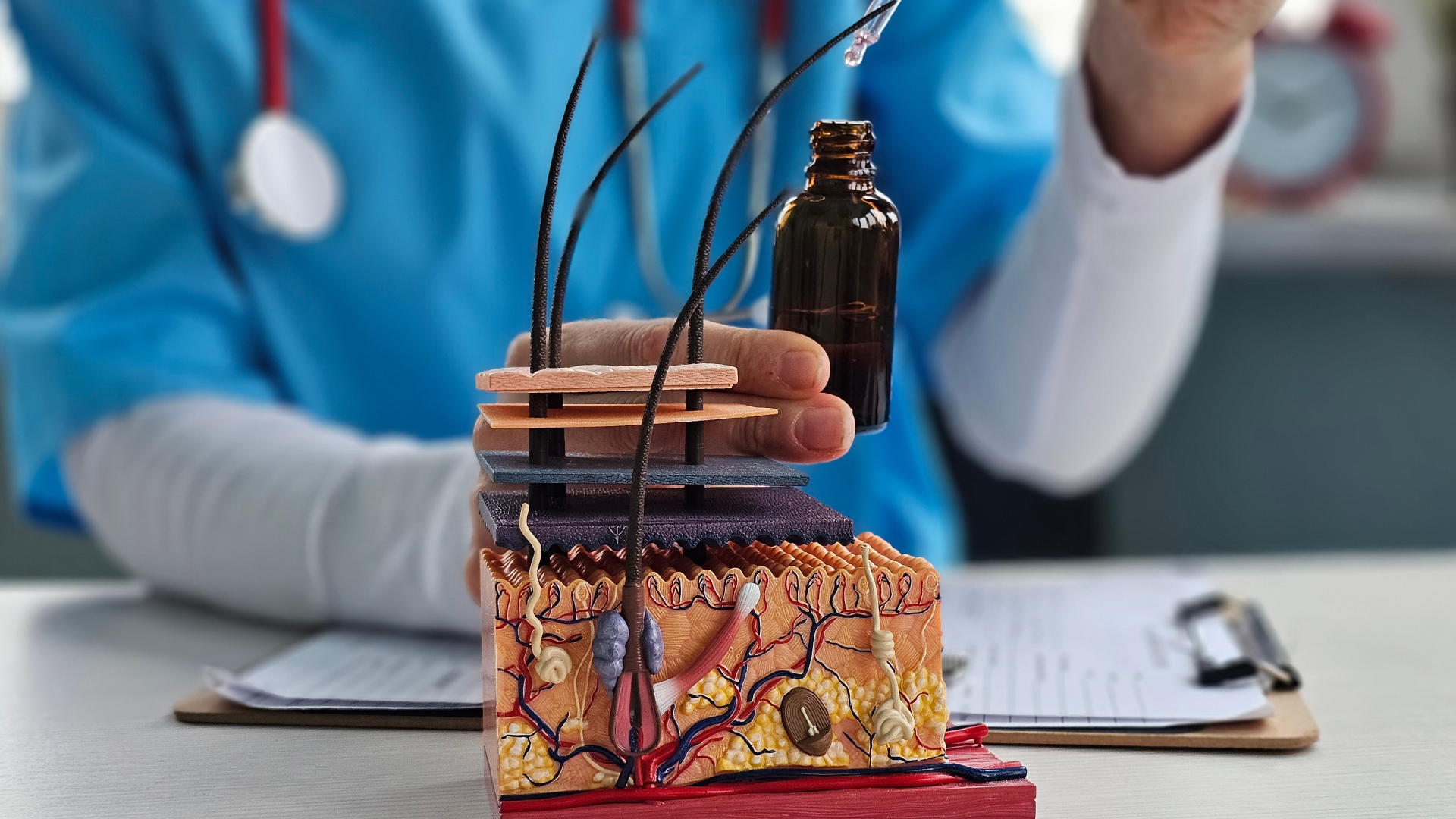
For cases of alopecia universalis that are resistant to conventional treatments, innovative therapies such as JAK inhibitors (tofacitinib) or selective TYK2 inhibitors (deucravacitinib) may be considered, although these treatments still require larger-scale studies to confirm their long-term efficacy and safety (Oliel et al., 2023; Yu et al., 2022). Your GP may refer you to a specialist dermatologist through the NHS for these more advanced treatments.
Hair transplantation represents a long-lasting solution, particularly suitable for androgenetic alopecia. This autograft technique consists of taking hair follicles from the areas where they remain active to reimplant them in the areas affected by hair loss.
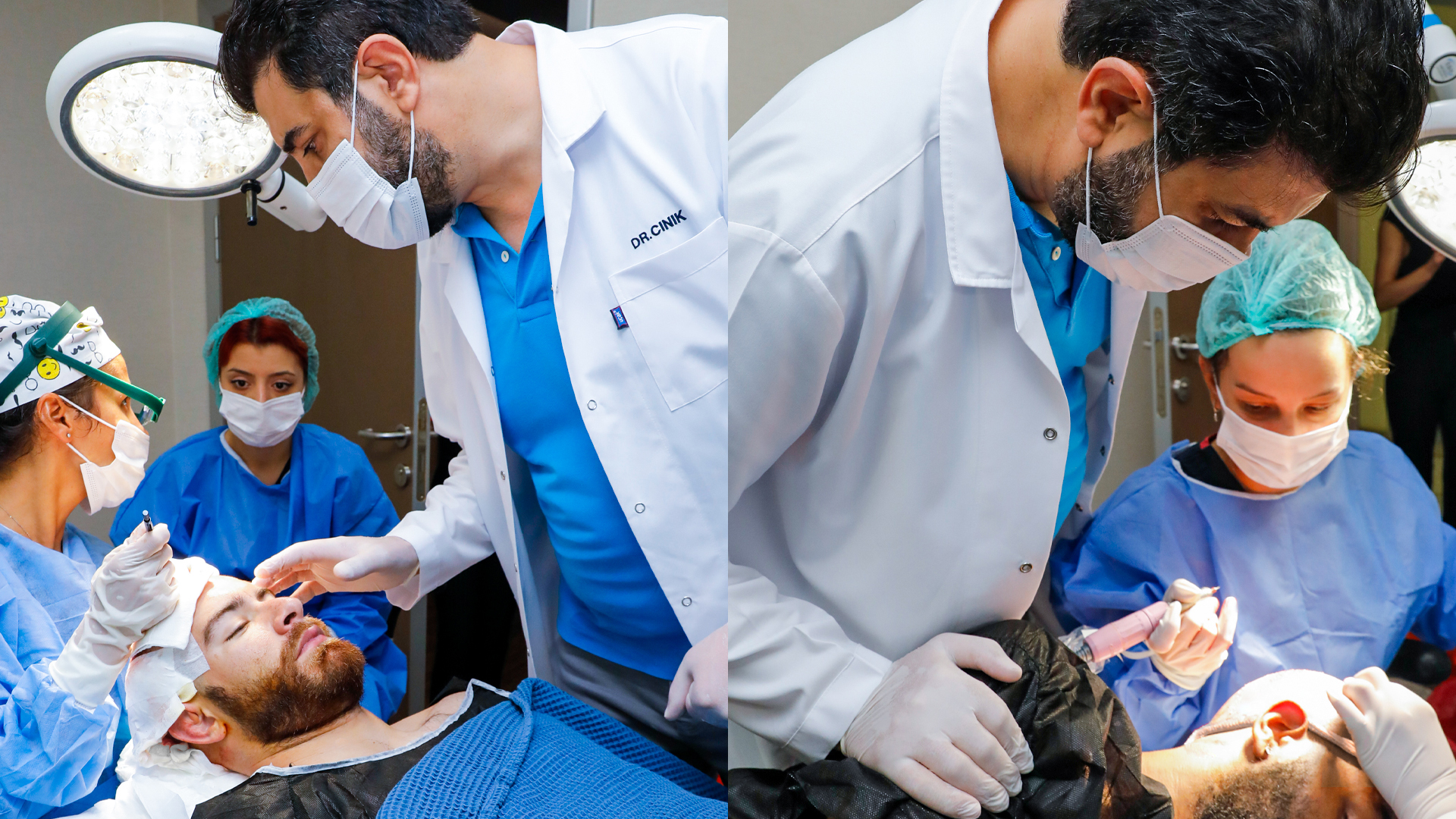
Two main grafting techniques are currently used: FUE (Follicular Unit Extraction) and DHI (Direct Hair Implantation). FUE allows the follicular units to be individually extracted and reimplanted in the recipient areas. The more recent DHI uses a special instrument, called a Choi pen, allowing direct implantation of the follicles. It is particularly appreciated for its increased precision and faster recovery.
Alopecia universalis: what to remember
- Alopecia universalis is an autoimmune disease that is characterised by total loss of hair and body hair.
- Although the exact cause remains uncertain, the disease involves a combination of genetic, environmental, and immunological factors, with lymphocytic infiltration of hair follicles playing a central role in the pathogenesis (Deshpande & Deshpande, 2023).
- There are different types of alopecia, each requiring a specific therapeutic approach. For some types, including androgenetic alopecia, hair transplantation may be considered, with modern techniques such as FUE and DHI allowing for natural and long-lasting results.
- Innovative treatments such as JAK inhibitors (tofacitinib) and selective TYK2 inhibitors (deucravacitinib) show promising results in the treatment of alopecia universalis resistant to conventional therapies (Yu et al., 2022; Oliel et al., 2023).
Sources
Deshpande, A., & Deshpande, M. (2023). A rare case of alopecia universalis. The Pan African Medical Journal, 46(44), 44. https://doi.org/10.11604/pamj.2023.46.44.41181
Oliel, S., Moussa, S., Stanciu, M., & Netchiporouk, E. (2023). Rapid hair regrowth in an alopecia universalis patient with deucravacitinib: A case report. SAGE Open Medical Case Reports, 11, 2050313X231213135. https://doi.org/10.1177/2050313X231213135
Yu, L., Yu, H., Zhang, S., Hao, Y., & Zhang, S. (2022). Case Report: Successful Treatment of Alopecia Universalis With Tofacitinib and Increased Cytokine Levels: Normal Therapeutic Reaction or Danger Signal? Frontiers in Immunology, 13, 904156. https://doi.org/10.3389/fimmu.2022.904156


